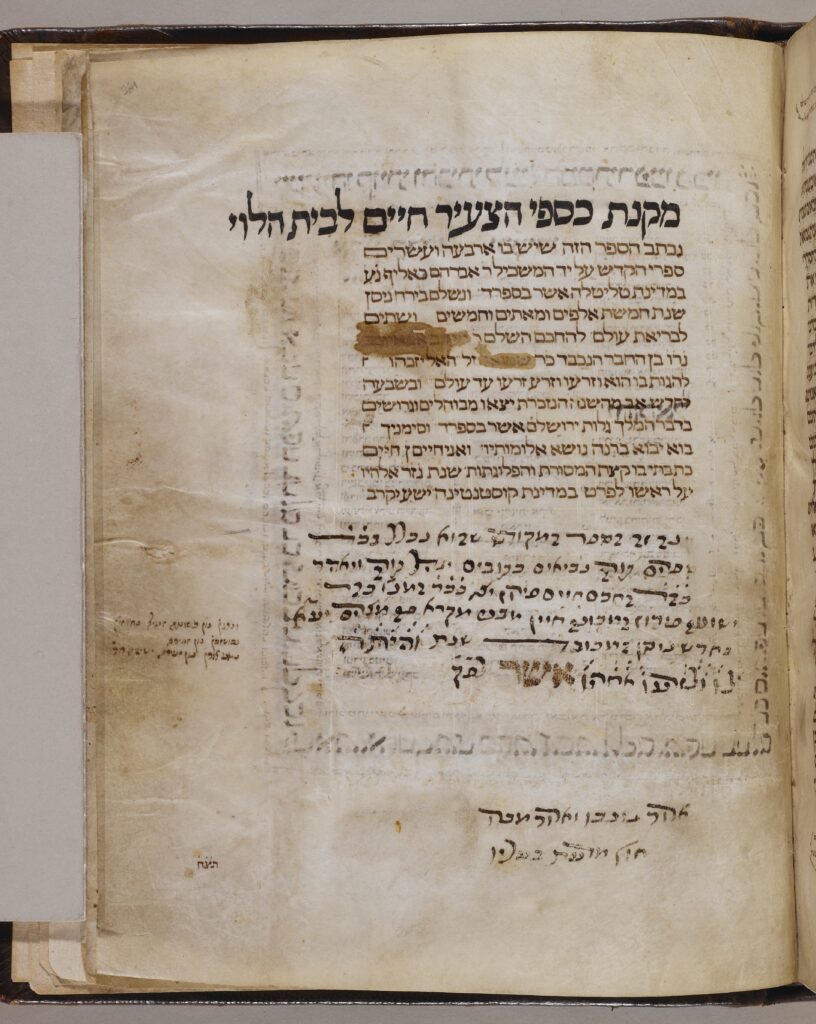The Toledo-Constantinople Bible

Adapted from the forthcoming book Discovering Great Treasure:
Like all Masoretic texts, The Toledo-Constantinople Bible (MS New York L6) includes precise Hebrew and Aramaic text, vocalization, and accents of the 24 books of the Hebrew canon. The colophon[1] of this Bible reveals a statement of profound resilience. The scribe wrote:

This book, which has the twenty-four holy books of scripture, was written by the learned Rabbi Abraham Khalif . . . in the city of Toledo which is in Spain. And it was finished in the month of Nissan, in the five thousandth, two hundred and fifty-second year since the creation of the world, for the most sage R. [Jacob Abayub] . . . son of . . . R. [Samuel]. God will grant him the privilege to recite them, he and his seed and his seed’s seed for ever. And on the seventh of the month of Av, in the same year, the exiles of Jerusalem which were in Spain went forth dismayed and banished by the king’s command. May they come back with joy, bearing their sheaves. And I Hayim Ibn Hayim have written therein part of the Massora and lists of variants in the year 5257 in the City of Constantinople. May salvation be at hand.
We learn that Rabbi Abraham Khalif began writing the biblical text in Toledo in 1492, but the Jews were forced to leave Spain before he could finish. Hayim Ibn Hayim completed it by writing the Masoretic notes and lists in Constantinople in 1497. This book was not laid aside; it was picked up and completed. It is a powerful testament to our textual tradition and shared learning.
This book was acquired by Elkan Nathan Adler in 1888 near Constantinople. According to Adler, this Bible stayed within five miles of the spot where it was completed for four centuries. When he bought it, the name of the original owner had been erased, but with a solution of tannic acid, he reclaimed this part of the story.
[1] A statement at the end of a book, typically with a printer’s emblem, that gives information about its authorship and printing.
Back to Glimmers of Light: Reflections on Hope for the Days of Awe 5785



